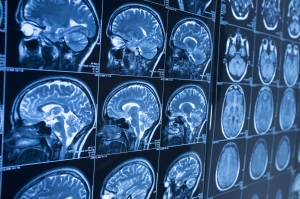4 Areas Of The Brain That Benefit From Exercise

Catherine O’Brien
 Aerobic exercise has been proven to improve cardiovascular health and diminish the risk of heart disease and stroke. In the last decade, the role of aerobic exercise within cognitive and affective domains has become more prominent. Exercise has been shown to reduce mood disturbance, improve psychological well-being, and improve positive valence associated with anhedonia, lack of motivation and energy (Tozzi, Carballedo, Lavelle, Doolin, Doyle, Amico, & Frodl, 2016; Toups, Greer, Rethorst, Grannerman, & Trivedi, 2017).
Aerobic exercise has been proven to improve cardiovascular health and diminish the risk of heart disease and stroke. In the last decade, the role of aerobic exercise within cognitive and affective domains has become more prominent. Exercise has been shown to reduce mood disturbance, improve psychological well-being, and improve positive valence associated with anhedonia, lack of motivation and energy (Tozzi, Carballedo, Lavelle, Doolin, Doyle, Amico, & Frodl, 2016; Toups, Greer, Rethorst, Grannerman, & Trivedi, 2017).
Changes and improvements in cognitive ability and mood state are often accompanied by changes in the neural circuitry of key structures within the brain. Research on aerobic exercise and the brain has identified the hippocampus, the amygdala, prefrontal cortex and the ventral tegmental area (VTA) as key areas that are effected by aerobic exercise. Interestingly, each of these areas are also involved in emotional processing and affect. As such, the aim of this analysis is to demonstrate the relationship between aerobic exercise and affect from a structural and behavioral point of view for each of these brain areas and to discuss how exercise can remediate some of the impairments to various brain areas.
Related Article: Training Your Body And Brain
The Hippocampus
- Function: Integral in processes associated with long term memory and episodic memory
- Impairments of this area cause: Deficits in memory, specifically an inability to form new memories (anterograde amnesia), Diminished affect
1. Exercise helps by: Following a 16-week exercise intervention, participants demonstrated decreased mood disturbance and greater emotional well-being. These changes were correlated with structural and connectivity changes in the parahippocampal gyrus and the
The Amygdala
- Function: Emotional fear response and conditioning, Consolidation of hippocampal dependent memories
- Impairments of this area cause: Inability to attend to emotional stimuli, decreased speed of processing emotions
- Exercise helps by: Rodent research done by Lin et al (2015) demonstrated that daily wheel running effectively prevents hippocampal and amygdalar memory deficits and strengthens neural circuitry for these brain areas.
The Pre Frontal Cortex
- Function:
- Dorsolateral Prefrontal Cortex: Responsible for memory, planning, set shifting, persistence, judgement, problem solving.
- Orbitofrontal Prefrontal Cortex: inhibition, focus, emotional regulation
- Medial Prefrontal Cortex: initiative, some lower body movements, emotion
- Impairments of this area cause: Decline in executive functions (i.e. problem solving, judgement, initiative) and difficulty regulating emotions
- Exercise helps by: Research done by Basso et al. (2015) found that a single bout of high intensity exercise (50 minutes on a stationary bike) improved higher order cognitive processes in the PFC such as strategizing and planning.
The Ventral Tegmental Area (VTA)
- Function: Associated with dopaminergic pathways- reward and motivation circuitries, mood regulation
- Impairments of this area cause: Lesser activation of the VTA and Nucleus Accumbens (NAc) is associated with depression and decreased motivation (i.e. anhedonia).
- Exercise helps by: Research done by Greenwood et al. (2011) found that long term exercise increased tyrosine hydroxylase (a precursor to dopamine) in the VTA, and helped increase activation of the VTA and regulate release of accumbens dopamine.
We know that exercise has incredible potential for improving brain function and health. The present list is meant to highlight some of the key brain areas and how they benefit from exercise. The nervous system is a complex and vast system. As such, there is still much to research, analyze and learn about the relationship between exercise and the brain. In this way, this list is not exhaustive.
Related Article: Fitness Helps Brain Function As We Age

You Might Like:
New Research on How to Prevent Alzheimer’s Now
People are currently living longer than ever before – and while you would be hard pressed to find someone who thinks this is bad thing, it does come with its own unique set of challenges....Gender Differences in Concussion Diagnosis and Treatment
We know that female athletes tend to be at a higher risk of certain types of injuries than their male counterparts. Things like knee and ankle injures immediately come to mind. However, did you know...Gait Speed and Longevity: What You Need to Know
Despite aging being a normal part of everyday life, it is still something that strikes fear into the hearts of most. “But why” I hear you ask? Mainly because in modern day aging is also...Meditation and Visualization for Athletes
Over the last few years, there has been a huge increase in the use of mediation and visualization across the globe. We have recently realized that meditation can play a role in improving athletic performance....Does Aerobic Exercise Improve Learning?
This article was adapted from a combination of speeches given at the European Sports Science Conference 2018, most notably Einat Kodesh (UNIVERSITY OF HAIFA, ISRAEL). Dayton Kelly Exercise has demonstrated numerous benefits to cognitive function...Three Types of Exercise for Reducing Anxiety
Most of us have experienced anxiety at one time or another. Whether it be jitters about starting a new job, increased heart rate before a big presentation or exam, or general uneasiness and nerves when...References
Basso, J.C., Shang, A., Elman, M., Karmouta, R., Suzuki, W. (2015). Acute exercise improves prefrontal cortex but not hippocampal function in healthy adults. Journal of the International Neuropsychological Society, 21, 791-801.
Greenwood, B.N., Foley, T.E., Le, T.V., Strong, P.V, Loughridge, A.B, Day, H. and Fleshner,
M. (2011). Long term voluntary wheel running is rewarding and produces plasticity in the mesolimbic reward pathway. Behavioral Brain Research, 217(2), 354-362.
Lin, T-W., Shih, Y-H, Chen, S-J, Lien, C-H., Chang, C-Y., Huang, T-Y, Chen, S-H., Jen, C. J., and Kuo, Y-M. (2015). Running exercise delays neurodegeneration in amygdala and hippocampus of Alzheimer’s disease (APP/PSI) transgenic mice. Neurobiology of Learning Memory, 118, 189-197.
Morelli, S.A., Rameson, L.T., Lieberman, M.D. (2012). The neural components of empathy: Predicting daily prosocial behavior. Social Cognitive and Affective Neuroscience Advance Access, 1-9.
Nestler, E.J. (2015). Role of the brain’s reward circuitry in depression: Transcriptional
mechanisms. International Review of Neurobiology, 124, 151-170.
Phelps, E.A. (2004). Human emotion and memory: Interactions of the amygdala and hippocampal complex. Current Opinion in Neurobiology, 14, 198-202.
Rajmohan, V., Mohandas, E. (2007). The limbic system. Indian Journal of Psychiatry,
49(2), 132-139.
Spielberg, J.M, Stewart, J.L, Levin, R.L., Miller, G.A., and Heller, W. (2008). Prefrontal cortex, emotion and approach / withdrawl motivation. Social Personality Psychology Compass, 2(1), 135-153.
Szymkowicz, S.M., Persson, J., Lin, T., Fischer, H. and Ebner, N.C. (2016). Hippocampal brain volume is associated with faster facial emotion identification in older adults: Preliminary results. Frontiers in Aging Neuroscience. 8 (203), 1-11.
Tozzi, L., Carballedo, A., Lavelle, G., Doolin, K., Doyle, M., Amico, F., . . . Frodl, T. (2016).
Longitudinal functional connectivity changes correlate with mood improvement after regular exercise in a dose-dependent fashion. European Journal of Neuroscience, 43(8), 1089-1096.














